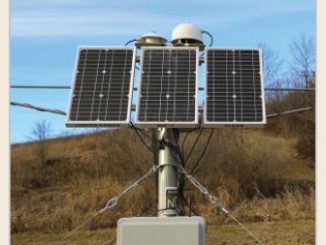
Despite the government’s focus on the utility-scale solar power sub-segment, the rooftop solar segment has been able to maintain its market share at about 10 per cent over the past few years. Capacity addition has grown at a compound annual growth rate of nearly 98 per cent during the period 2012 to 2015, to cross 1 GW as of September 2016. The growth can be attributed to the falling capital costs of rooftop solar plants and a strong push from the government to provide power to areas where grid connectivity is low.
Tamil Nadu, Maharashtra and Gujarat are the top three states with the highest rooftop solar capacity installed as of September 2016. Within these states, industrial and commercial installations account for the highest share followed by government buildings. Some of the poorest performing states in rooftop solar are Uttarakhand, Bihar and Odisha.
Consumer-wise share
Rooftop solar is relatively more popular among industrial consumers, with about 37 per cent or 377 MW of the total rooftop solar capacity installed. Commercial and institutional consumers account for the next largest share at 26 per cent or 263 MW. The push towards rooftop solar for these customers comes from the fact that they pay some of the highest tariffs for grid-based power.
Residential consumers account for about 25 per cent or 260 MW of the country’s rooftop solar installed capacity. Inexpensive grid-based power and low awareness about rooftop solar has restricted the growth of the residential segment for rooftop solar, as opposed to developed countries such as Australia, where rooftop solar capacity is almost entirely developed by residential consumers.
Government institutions account for the remaining 12 per cent or 121 MW of installed rooftop solar capacity. After limited development until now, this segment of consumers is beginning to grow on the back of a strong push by the government to power its own buildings with solar energy.
The market share dynamic among consumers is unlikely to change much in view of the government’s cross-subsidisation policy that allows discoms to levy higher tariffs on commercial and industrial consumers to help subsidise power supplied to residential and agricultural consumers.
Cost and financing
The rooftop solar segment works on two financial models in India: the capex model, wherein the consumer bears the complete capital and operational cost of the project, and the opex model, which allows consumers to pay only for the operations of the project. The capital costs are borne by the developer, and power is drawn from it as per the power purchase agreement (PPA). While rooftop solar in India is predominantly based on the capex model, the opex model is gaining traction, growing from 3 per cent in 2013 to 23 per cent in 2016. Under the opex model, tax investors fund about 55 per cent of the projects while the remaining is supported by private equity funds, independent power producers and large Indian conglomerates.
Financial support for the solar segment has been a major challenge. Given the government’s push to solar energy, the situation is improving. Multilateral financial institutions such as the Asian Development Bank, the World Bank and KfW, and the banking sector in India have provided upwards of $1.5 billion of low-cost development finance. In addition, over $1 billion of equity capital is now available for investment in the distributed generation segment that includes solar rooftop. Refinancing options are accessible through non-banking financial institutions such as the Indian Renewable Energy Development Agency (IREDA) and India Infrastructure Finance Company Limited.
Interest costs have fallen from about 13 per cent to 10 per cent in the past two years. The availability of long-term loans and non-recourse lending for projects with a good performance record and PPAs has made investment in the segment more favourable. Further, the introduction of new financial instruments such as green bonds and infrastructure investment trusts has helped attract greater investor interest.
Improved access to finance will help the rooftop solar segment grow. BRIDGE TO INDIA expects 900 MW of capacity to be added in the rooftop solar segment in 2017, to reach around 16.4 GW of installed capacity. However, the estimates still fall short of the 20 GW by 2022 target allotted to the segment.
Based on presentations by Jasmeet Khurana, Associate Director, BRIDGE TO INDIA, and Vinod Kala, Managing Director, Emergent Ventures



